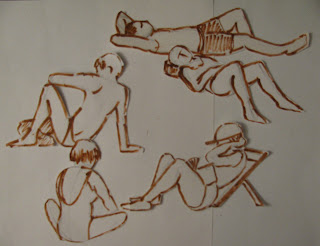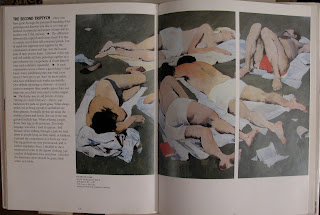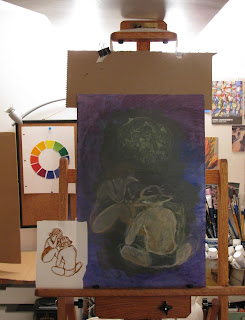Did Serge Hollerbach's reference to "shrimp on a bed of lettuce" whet your appetite for more? It certainly whetted mine,as I aimed to see what I could learn from emulating his approach.
After developing my own layout from years-old sketchbook drawings (shown at the top), I found another old painting suitable for the sacrificial altar and painted out the details.
As frequently happens, something on my bulletin board sparked an idea. Serendipitously, here are Seurat (top) and Degas (below):
In an early stage of my layout, I realized I needed something more than the five figures - and there it was: From Degas' lower right corner to my upper left, a beach umbrella!
As I worked along, I began to think of that umbrella as the most successful part of the whole thing.
And here it is -- the finale of "Catching the Rays."
But still on the drawing board was the couple I liked so much, and I wasn't quite ready to relegate them to the recycling box.
There was nothing for it but to haul out another sacrificial painting. This one was just a fun "copy" of the interior of a red cabbage sliced in half -- really, truly, it was this fascinating.
So fascinating, in fact, that I couldn't bear to obliterate both circular patterns.
I worked along, holding the thought of sun beating down on this beach scene.
Today's special: Two for the price of one. Here's the finale of "Under the Heat Dome."
Did I meet my goals of learning something from Hollerbach? Well, sort of, but I'm too hot and thirsty for any heavy-duty analyses. Is that a cooler bag? Is there anything left to drink?




























